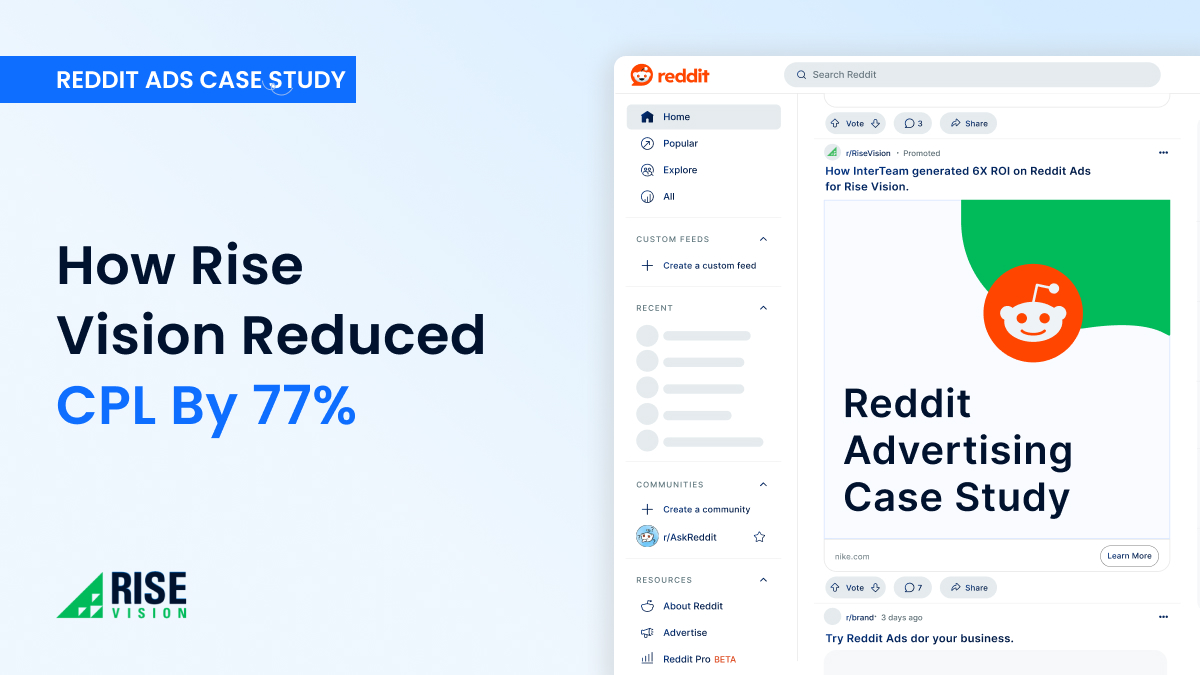
Targeting Enterprise on Google And LinkedIn Ads Case Study
5x ROI Positive In Two Months For Pimly
About
Pimly
Pimly is a B2B SaaS company that offers a product information management (PIM) system for small to midsize manufacturing companies. Their Salesforce-native solution consolidates and organizes essential branding content, making it simple for businesses to add changes to their marketing assets across all channels from a single platform.
The only problem was that Pimly was having trouble distinguishing itself in a highly competitive PIM market and generating qualified leads.
Our Role
InterTeam pitched them on targeting Salesforce PIM-related keywords. With a track record for pinpoint accuracy with Google, Bing, and LinkedIn ads, they hired us to give them the competitive edge they needed to thrive in a crowded industry.
While discussing the project deliverables, Pimly explained that their goal was to get five or more leads per month, which would be a significant boost in the advertising output and could provide them with a promising return on investment.
Challenges
Challenge #1 Competitive Landscape
Pimly offers a powerful and sought-after PIM solution that streamlines marketing for SMBs. However, it competes against a handful of other high-quality advertisers in a hyper-specific niche and targets a particular type of clientele.
Essentially, they’re targeting highly competitive keywords with low search volume. So, when a user searches for keywords like “product information management system” or “PIM,” it’s not uncommon for them to see three to four different ads from different advertisers—costs per click often exceed $30 USD.
Another issue was that even within a niche industry, Pimly’s platform has a unique selling proposition. They essentially offer the only PIM software that is built on Salesforce, which makes them unique but also limits who they can work with. Keywords that included “Salesforce” offered an easy way to amplify ad campaigns. While this provided us with an excellent opportunity to distinguish them from the other companies, the solution was simultaneously the problem. “Salesforce” was trademarked.
Solution: Requesting Google Trademark Exemption for Salesforce Terms
When we first launched, we were immediately flagged for trademark violations because our copy and keywords contained the terms “Salesforce” and “SFDC”, so we had to request permission to use these trademarked terms using the Google Trademark Exemption Request Form. This took a lot of time. We had to request multiple times and Google didn’t give us much information when our initial requests were turned down.
However, we were eventually approved by explaining that we were a Salesforce partner and that our software added additional functionality to Salesforce. We’ve attached a screenshot of the text we used for reference in to make your appeal process easier!
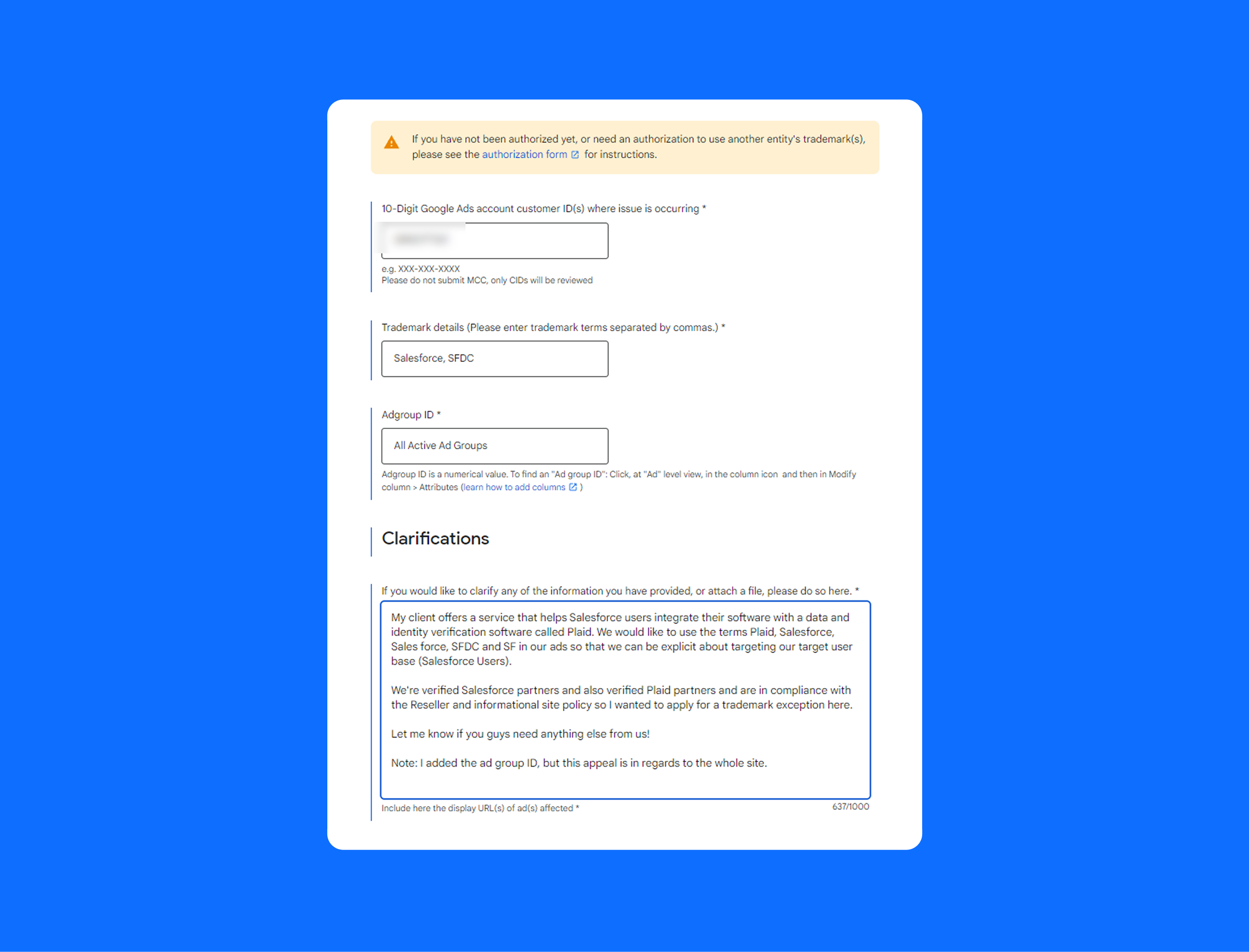
The trademark exemption had a massive impact on the campaign. Since May, CTR has consistently been above 10% across all pages, which is a 29% increase from before we were able to use it. Salesforce PIM keywords went up 68%.
Challenge #2 High Friction Call-to-Action
Another challenge we had to overcome was a low CTR early on in the campaign. Our ads were prompting readers to sign up for a demo or meeting, which turned out to be too aggressive for first-time encounters and was causing friction.
Part of the problem was that Pimly’s software is a high-ticket solution with an annual product life cycle. In other words, it is a big financial and operational commitment. We needed to shift focus to a more appealing call to action
Solution: Pivot to Promoting Lead Magnets on Google and LinkedIn Ads With Dedicated Landing Pages
Since leads hadn’t converted thus far on high-friction CTAs. We decided to pivot to lower friction calls to action. Rather than making a lead commit to a demo or a meeting, we pivoted to a lead magnet strategy instead.
Lead magnets are small free content that you can offer to leads in exchange for an email form submission. It’s obviously less high intent than booking a demo, but if you know what you’re doing you can leverage a lead magnet download to book a call later on, either through savvy sales follow ups or strong email nurture sequencing.
We started building out different ebooks and guides with content focused on high intent keywords. These included content focused on strong general keywords like the “Salesforce Product Information Management Guide” seen below.

We also targeted competitor keywords with competitor focused guides, like the “Salsify Salesforce Connector Guide” seen below.

Dedicated Landing Pages for Each Lead Magnet
For each lead magnet we also created a dedicated landing page in Unbounce. These landing pages were built with conversion optimized designs to maximize conversion rates and the meta data and copy was keyword optimized so that we would get the lowest CPCs and increase our conversion rates even more.
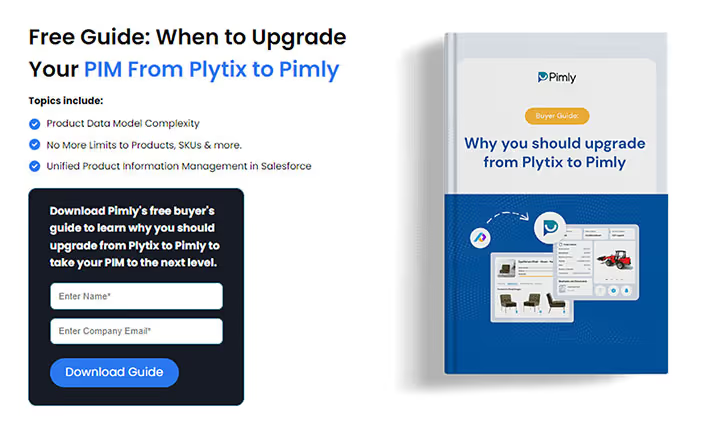
Focusing Further on LinkedIn Ads for Promoting Lead Magnets
Finally, we began to shift our focus away from Google Ads to a more even distribution between Google AdWords and LinkedIn Ads. We wanted to use Google as the first touch point and convert leads on LinkedIn through retargeting ads. We also tested top of funnel LinkedIn ads promoting our lead magnets to members of high intent linkedin groups.
On LinkedIn we leveraged document ads which allow you to tease the first 2 pages of a document, creating intrigue, while requiring an email in order to view the rest. Here’s an example of one of our highest converting document ads with some sample ad copy.
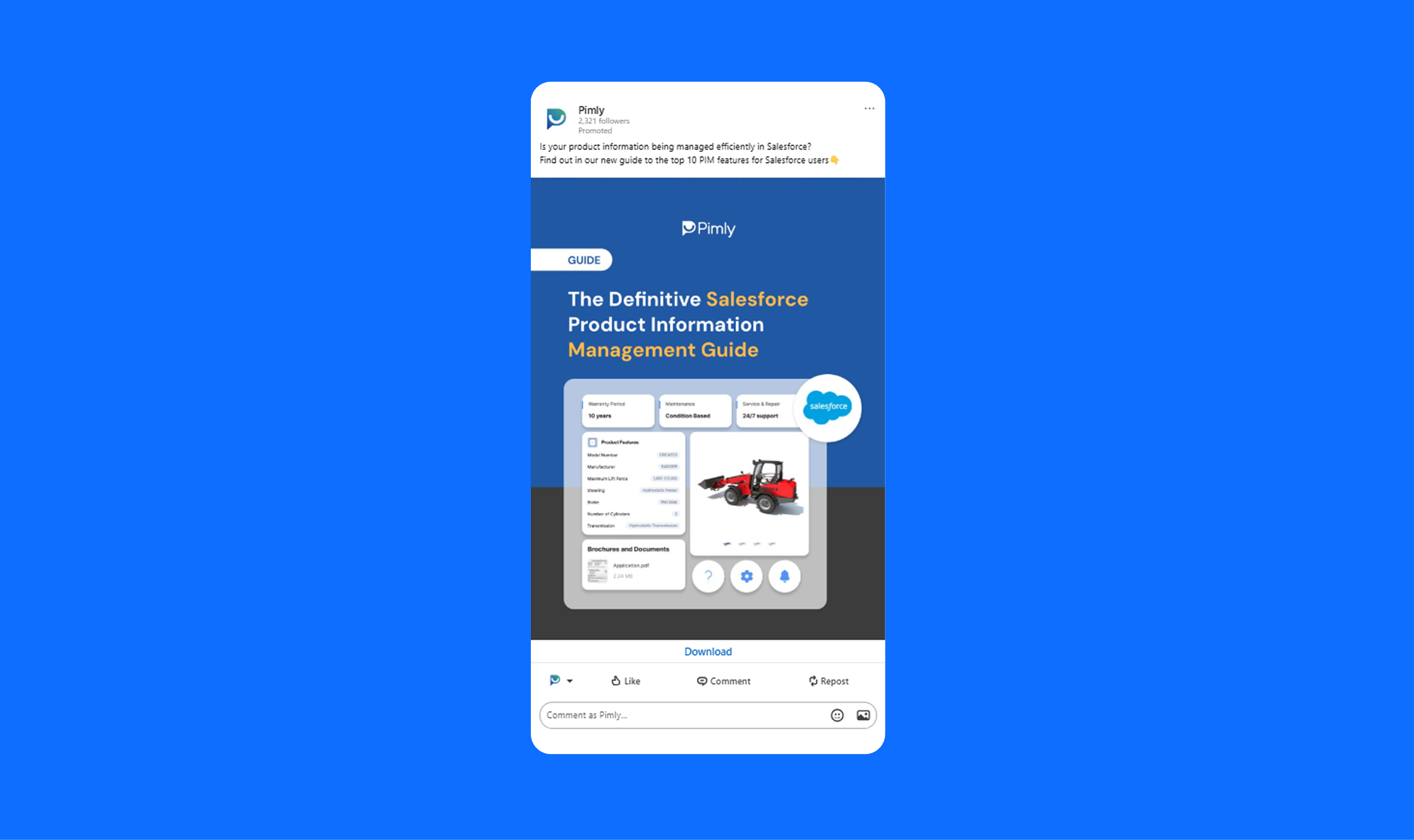
The Results
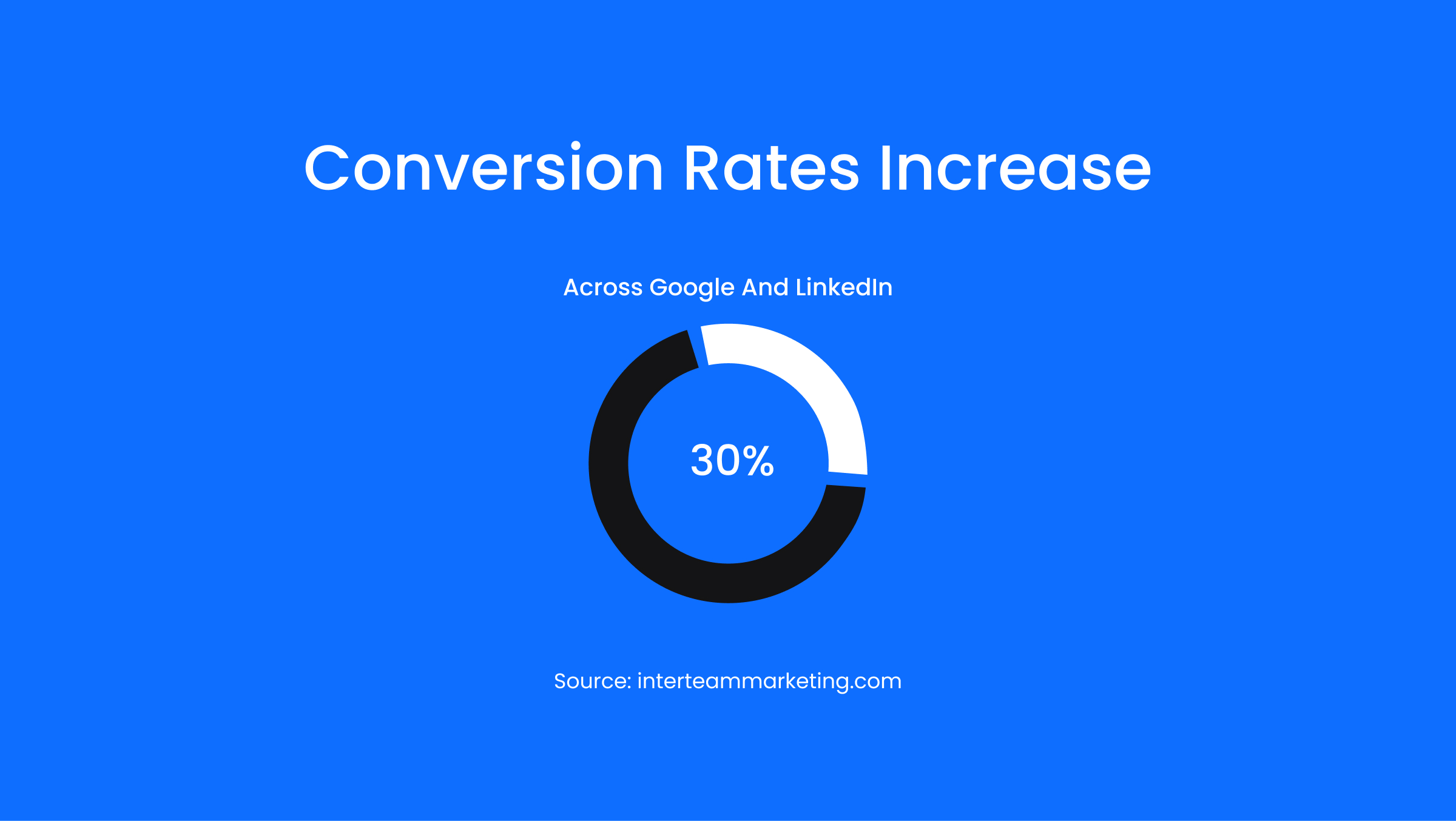
Despite a slow start, the lead magnet strategy switch was extremely successful. In total, we created eight keyword optimized lead magnet guides. After launch, our conversion rates increased by 30% across both Google and LinkedIn! The guides also got extremely high quality leads,including manyenterprise leads.
Since we started working with them in January 2024, we’ve more than doubled our deliverables, with 60 leads in 5 months. Within the first two months of the campaign, Pimly closed a $100,000 deal!
In total, we created eight different guides and optimized each one to match the keywords we were targeting—some with conversion rates of 30%!
About InterTeam
InterTeam is a full-service PPC agency that offers expert marketing and advertising services to B2B services and SaaS companies. We use paid search and social ads to help businesses generate quality leads, achieve their marketing goals, and accelerate growth.
FAQs
Template question
Template text answer
More Case Studies

Multi-Channel Performance Marketing Case Study

Google Ads for B2B SaaS Case Study
